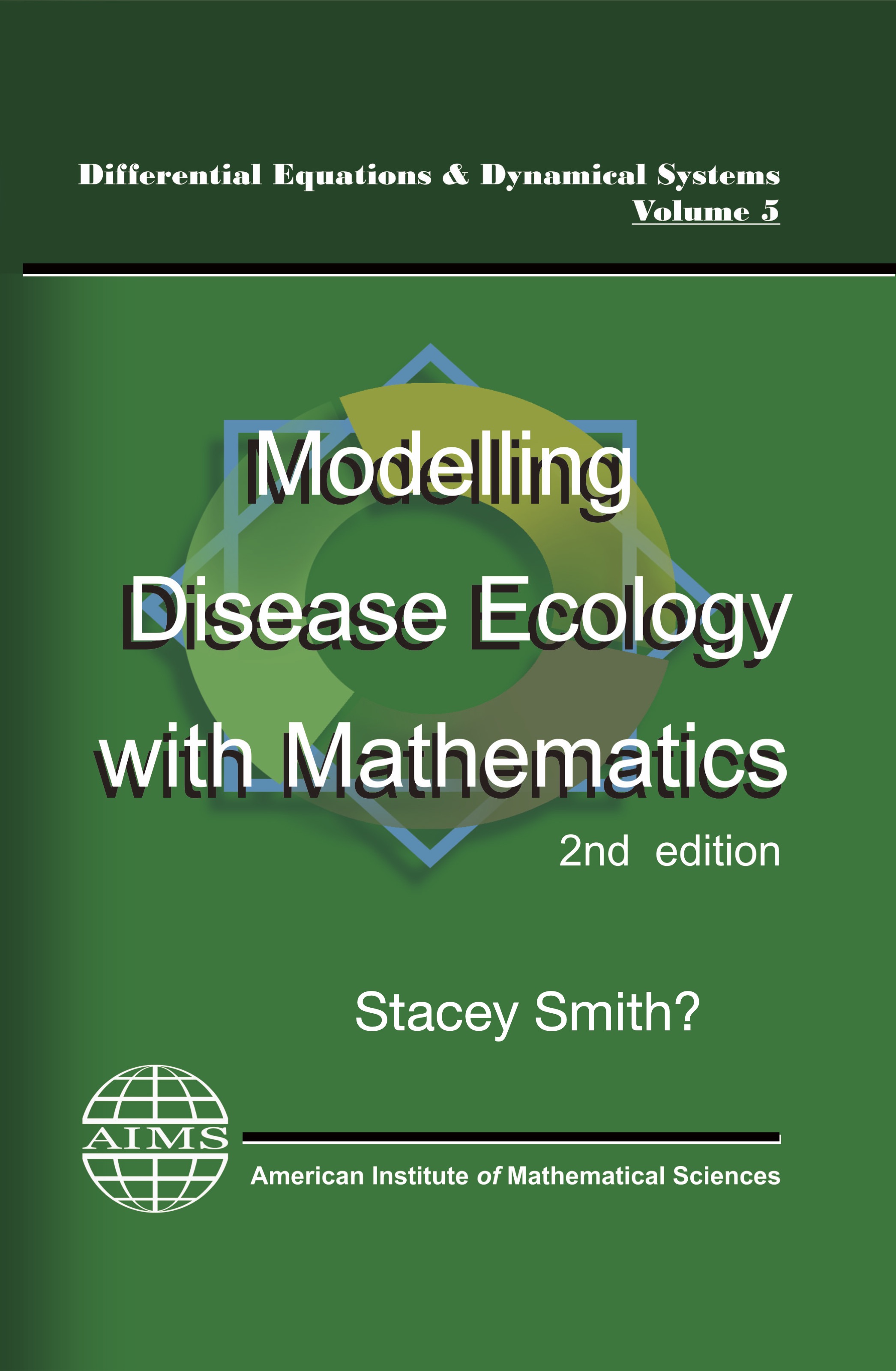MAT 3395 (Winter 2023)
Professor: Dr. Stacey Smith?
| Professor | Dr. Stacey Smith? (the question mark is part of my name) | 
|
| stacey (dot) smith (at) uottawa (dot) ca |
Texbook: Modelling Disease Ecology with Mathematics, second edition, by Stacey Smith? (American Institute of Mathematical Sciences, 2017). Available free here.
Syllabus: A formal syllabus can be downloaded from here, although it's almost identical to the first part of this webpage.
Course Content: The objective of this course is to present a detailed introduction to modelling, using infectious diseases as the primary motivation and Matlab as the software.
We will cover a variety of topics on the mathematical modelling of infectious diseases (HIV, malaria, yellow fever, measles). Topics will include fitting curves to data, bifurcations, chaos and the basic reproductive ratio.
Assessment:
| Weekly assignments | 20% |
| Midterm | 40% |
| Project Presentation | 15% |
| Final Project | 25% |
Assignments: Assignments will be taken from the textbook and are due each week. You may work in pairs or groups.
Project: The project will consist of four parts:
- A one-page proposal (due Jan 30)
- The mathematical model (due Feb 13)
- A 20 minute individual presentation (before the end of semester)
- The final project (due at the end of semester)
Click here for the Presentation Marking Scheme and some general tips.
Some project ideas for diseases can be found here:
Your project should be of the same order as the more complex examples found here. If you wish to use one of these as a starting point, that's great, but you are encouraged to think beyond the parameters of the suggested project.
Here are some examples of past projects:
- Modelling a Ponzi Scheme
- Simulations of Optical Thin Films
- Traffic Problems On The Quebec Bridges
- The Effect of Vaccination against Tuberculosis (TB)
- African trypanosomiasis or "Sleeping sickness" (This later became a published paper)
- Avian Flu Model
- Predator-Prey Dynamics
- Deformed Wing Virus in Honey Bee Colonies Vectored by Varroa Destructors
Plagiarism: The university takes plagiarism very seriously. This includes copying other assignments or reproducing any work from another source without citation.
Note: Any changes or announcements will appear on the course website. You should check the website regularly for updates. Note that I will not answer math questions by email.
Class notes:
Week 1
Curve Fitting (Chapter 3)
Splines (Chapter 4)
Week 2
Simple epidemic models (Chapter 5)
Week 3
R0 (Chapter 6)
Fun extra reading: The Joys of the Jacobian
Week 4
A disease with lifelong immunity (Chapter 7)
The spread of Measles (Chapter 8)
Week 5
Partial Differential Equations (Chapter 9)
Week 6
Case study: HIV vaccination
Case study: HPV vaccination
Week 7
Application: Guinea-worm disease (Chapter 18)
Matlab code for impulsive differential equations for the Guinea Worm model:
GWD.m
GWDf.m
Week 8
The Discrete logistic equation (Chapter 10)
Bifurcations (Chapter 11)
Week 9
Application: AIDS and End-stage renal disease (Chapter 16)
Week 10
More advanced epidemic models (Chapter 12)
Measles with vaccination (Chapter 13)
Week 11
A disease with an asymptomatic class (Chapter 14)
Impulsive differential equations (Chapter 15)
Week 12
Week 13
Application: Zombies (Chapter 19)
The viral spread of a zombie media story
Project presentation